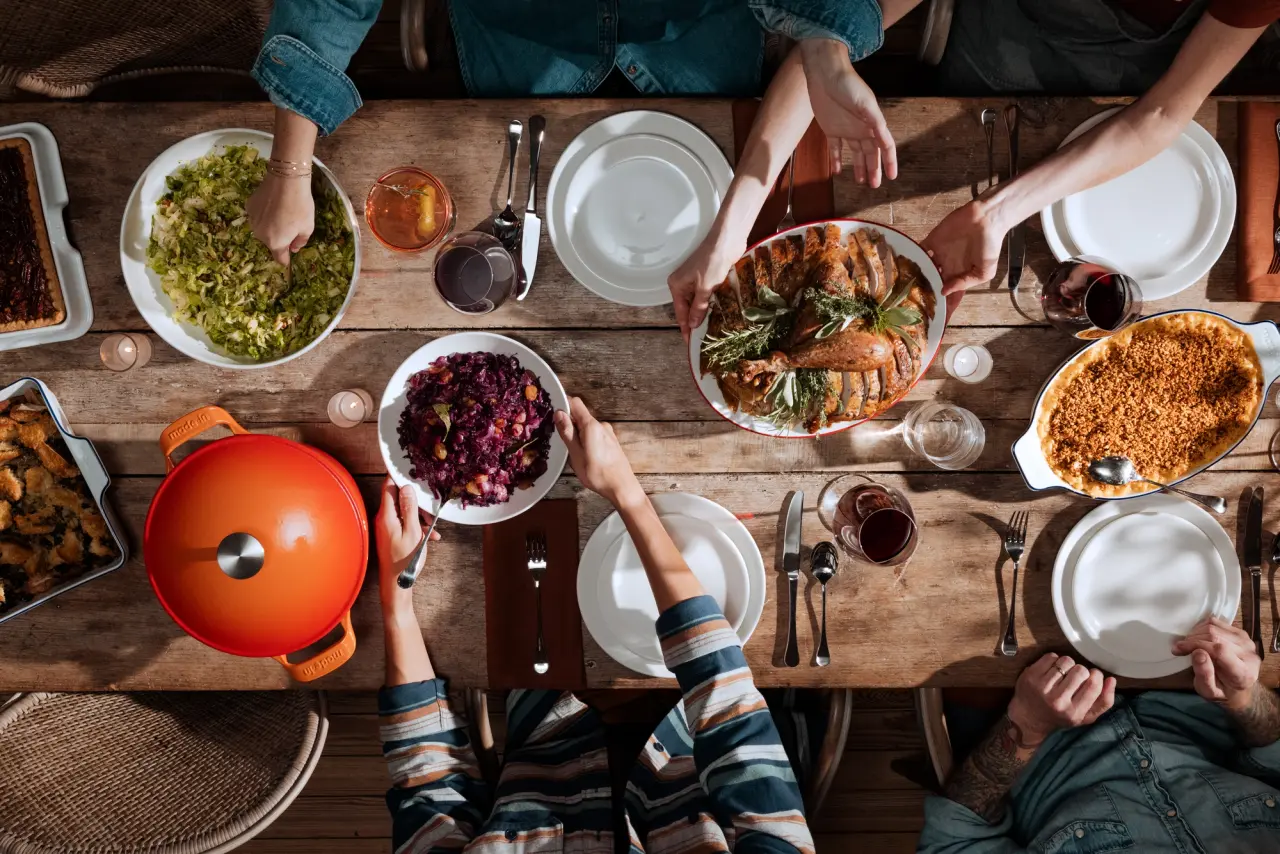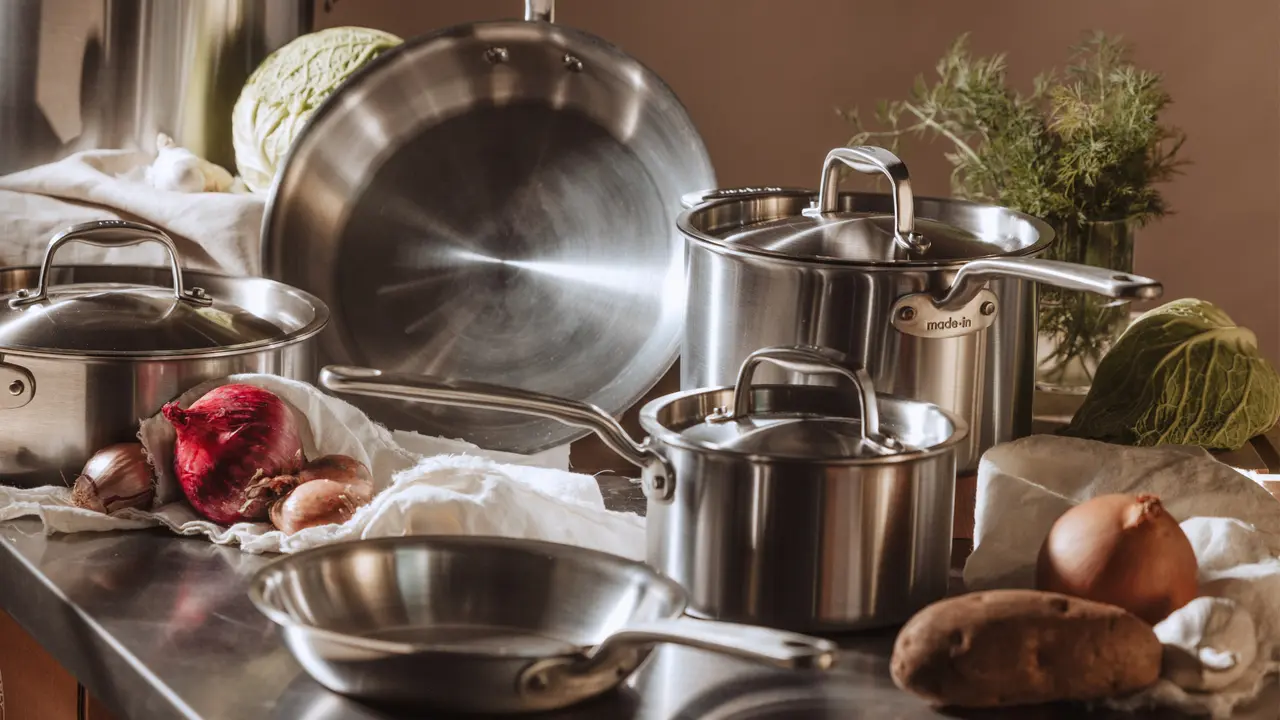Starting your culinary journey from square one? Here are five key cooking-related skills sure to get you on the fast track to greatness.
Becoming a top chef doesn’t happen overnight. Sure, buying the very best cookware and cutlery is an excellent start. But without the right cooking (and cleaning) foundation, you’re bound to make a mess in the kitchen.
We’ve rounded up a comprehensive guide to becoming a better home chef based on five key culinary topics.
- How to sauté
- How to deglaze a pan
- How to carryover cook
- How to caramelize
- How to clean up
Individually, they may seem random. But put all of these abilities together, and you can tackle any complex recipe we throw at you. Most importantly, a mastery of these five criteria will guarantee you a clean, organized kitchen and some of the most delectable dishes from NYC to LA to London to Paris and beyond.
You ready to get started? Grab your notebook and pencil, clear your brains, and prepare to become the top chef master you were born to be.
How do you sauté food?
Despite being synonymous with a ‘pan,’ the word ‘sauté’ is commonly used as a verb. So, what exactly does it mean to sauté something? And how is a sauté pan different than a classic frying pan, whether it’s stainless steel, carbon steel, nonstick or oven safe?
To implement this technique, we recommend using a good sauté pan, which provides the functionality of a skillet or traditional frying pan while offering more versatility thanks to its high, straight walls. This means you can cook with liquid while keeping your stovetop clean.
In a nutshell, sautéing means cooking food (relatively) quickly over medium to high heat in a minimal amount of fat, such as butter or oil. In French, the verb ‘sauter’ means to jump, which is actually what you will do. After heating fat in the pan and adding your ingredients, you want to ‘toss’ or ‘flip’ food to ensure even cooking.
The key is to not do too much! Let your amazing pan work its magic, and food retains its natural moisture, flavors and aromas thanks to the swift heating process. We think some of the best dishes to sauté include tender meats like filet mignon, chicken, veal, as well as veggies like green beans and asparagus.
How do you deglaze a pan?
Did you read our French cooking articles? Or, maybe you took a look at our helpful holiday blogs. A while back, we published a few Pulitzer-Prize-winning pieces discussing how to use leftover wine as a means of ‘deglazing’ a pan (we’re still waiting on those awards).
First, deglazing allows you to save the incredible flavor from the chunks of food at the bottom of the pan. Secondly, and perhaps most importantly, the act of deglazing helps you clean your pans in a way that requires very little effort.
You can use red or white wine, and just a dab will do you. To be exact, a generous splash—just to fill the bottom of the pan about a ¼ inch—is plenty.
Here’s how it’s done. Once you’ve removed your main ingredient from the sauté pan or other vessel, turn the heat up to high, and pour in wine. Warning: proceed with caution when using alcohol. Always move the pan temporarily away from the heat to avoid a flaming fireball!
How long should you let the wine simmer? After the contents return to a boil, let the browned drippings release from the bottom and become one with the liquid. For most meals, this will take about 10 to 20 minutes. Once the consistency is creamy and the taste is to your liking, your sauce is ready.
Now, if you’re deglazing the pan purely for cleaning purposes, there’s no need to waste the wine! Some water (and soap) works perfectly fine.
What is carryover cooking?
While some cooking skills are intentional, ‘carryover cooking’ is an effect you have little control over. In short, when certain foods—especially larges ones—are roasted in the oven or cooked on the grill, they continue to stay hot long after they’ve left the original source of heat. This technique is also called ‘resting’ food.
It makes sense. If the internal temperature of a steak is super hot, it takes some time for those degrees to cool down. During that time, the steak’s internal juices continue to move outward and marinate the meat, altering the doneness as well as the final flavor.
So, you have to be strategic. If you’re pan-roasting a big steak or piece of lamb and want the final product to be medium-well, you should take them off the stove at around the medium point. Of course, a thermometer and a bit of research can help improve your precision.
So, what kinds of cookware should you use to carryover cook? All the usual suspects.
From roasting pans and grill racks to oven safe skillets and sauté pans, you can perfect the carryover method with virtually any vessel. Common recipes include pork tenderloin, prime rib, and other thick cuts of beef, lamb and pig. As for poultry—steer clear.
How do you caramelize when cooking?
To be an amazing chef, you need a variety of skills in your arsenal. Caramelization is one that’s essential when preparing steaks, veggies, and desserts like crème brulee.
To keep it simple, you ‘caramelize’ by introducing sugar to high heat in a dry environment. So, if you were to pour a bunch of sugar in a hot pan, it would eventually break down into a caramel sauce. The same goes for strawberries, cherries and other sweet ingredients. Eventually, they lose their dry exterior and release an ooey, gooey, awesome concentration of fruity topping. The trick is—just keep cooking it!
So, how can caramelization help enhance your savory dinner dishes? Caramelization happens because the food you are cooking—such as onions or zucchini—already have natural sugars in them. In reacting with the heat, you achieve that rich, buttery, delectable taste and gorgeous brown color. And the more you cook it, the darker it gets.
Now, don’t get this technique confused with searing. While steaks or veggies can be seared or sautéed quickly in the frying pan without fat, caramelizing takes a bit more time. Just. Keep. Cooking. Oh, and you may be wondering—do steaks actually have sugar in them?
Well, not exactly. If you want that amazing caramelized exterior on your cut, you’ll have to marinate it first! Grab a good glaze, and lather it on before you cook.
How do I clean up after cooking?
Such a simple question, and yet, so many complex answers! We’ll keep our crash course as straightforward as possible. To be a better cleaner chef, take advice from the snippets below, which were taken from some of our past articles. We also tossed in a few new tips for good measure.
Is there a wrong way to clean cookware? – In short, yes. Although steel wool and industrial strength cleaning products have their allure, you want your pots and pans to last a lifetime. Therefore, you need to use rigorous—yet relatively gentle—methods for cleaning them. Here's are our most common cookware cleaning questions.
How to clean a burnt nonstick pan – Start with a quarter cup of bar keepers friend or our Made In Cleaner. Add a couple of tablespoons of hot water, mix, and use a soft bristle brush (or toothbrush) to tackle tough spots.
Stains giving you a really hard time? Fill the burnt pan with super hot water from the tap (boiling water on the stove would be a bit overboard). Add in a couple of shakes of baking soda, and let soak for an hour or two. Afterward, caked up grease and grime will release from the coating much easier
How to clean a burnt stainless steel pan – To remove burnt food from a stainless steel vessel, follow this foolproof method:
- Keep the pan on the stovetop and fill the bottom with about ½ inch of water
- Take off the heat and sprinkle in 2 tablespoons of bar keepers friend or Made In Cleaner
- Let it fizz, watch it work, then pour into the sink
- Grab a scouring pad and get some elbow grease going
- Your shiny pan should be as good as new!
When it comes to everyday maintenance, you don’t want to attack your stainless steel pots and pans as you would when they’re burned. Instead, keep it light. Use standard dishwashing soap with a sponge or relatively soft bristle brush.
How to clean a chef’s knife – Since they’re often made of metal, chef’s knives need proper cleaning to ensure the blades stay sharp and free from rust. First, stay away from the dishwasher! This is a job to be done by hand. Here’s how:
- When you’re done using the knife, wash immediately to prevent food from drying and sticking.
- Point the blade away from your fingers.
- With your other hand, take a soft sponge with plenty of soapy warm water, and wipe both sides of the knife.
- If food is caked on top, let it soak similar to your burned cookware.
Did you make it though our ultimate Made In how-to guide? Keep it on hand for instant support on your quest to becoming better than basic!





















